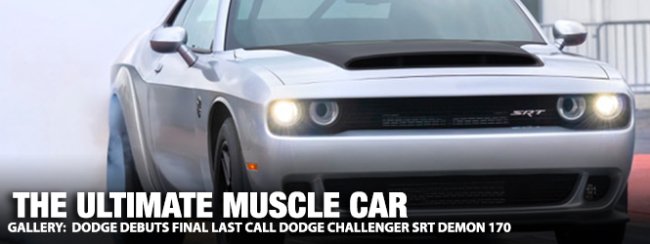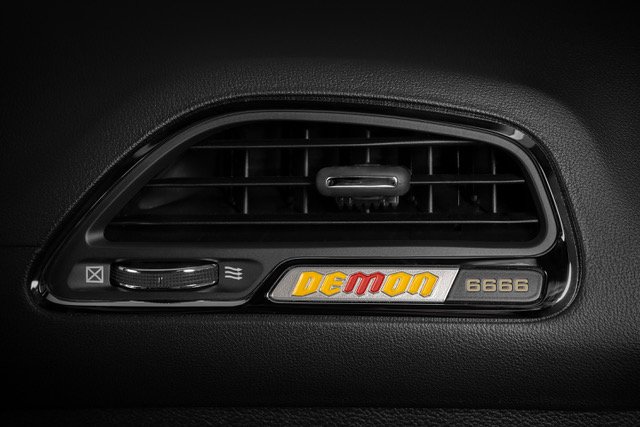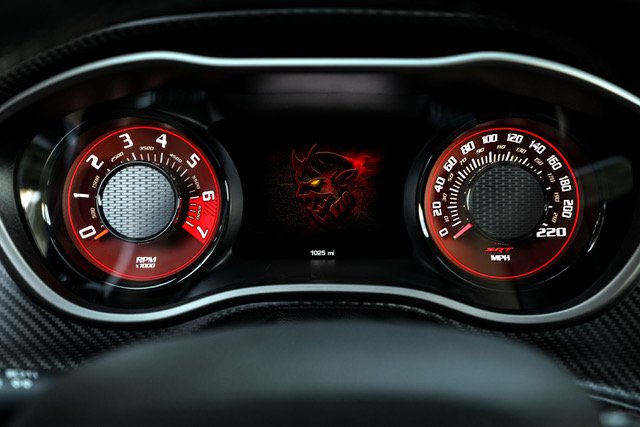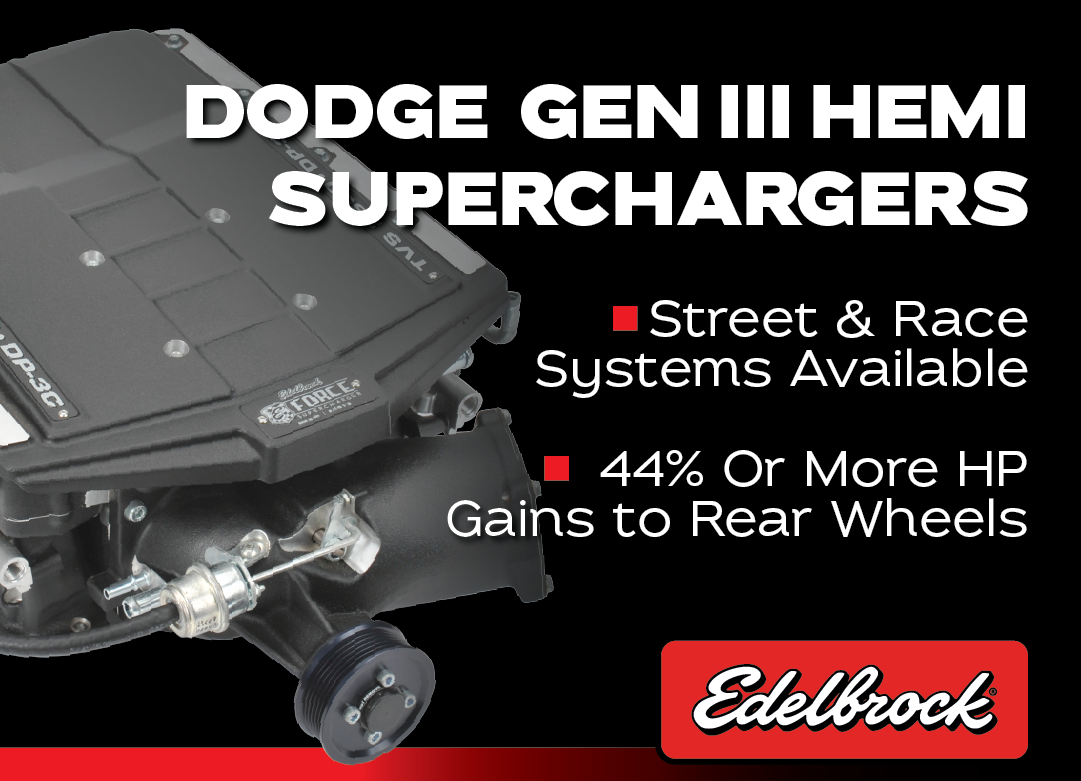 Sadly, we have known for more than a year that 2023 would mark the end of the current generation of the Dodge Challenger and Dodge Charger, and with their demise, it seems that supercharged Hemi-powered muscle cars will soon be a thing of the past.
Sadly, we have known for more than a year that 2023 would mark the end of the current generation of the Dodge Challenger and Dodge Charger, and with their demise, it seems that supercharged Hemi-powered muscle cars will soon be a thing of the past.
Fortunately, Tim Kuniskis and his team at Dodge have made sure that the modern era goes out with a bang by introducing the Challenger SRT Demon 170 – the ultimate muscle car. That is a pretty significant claim, seeing as how Dodge has created some pretty stunning muscle cars over the years, but the numbers speak for themselves.
1,025 horsepower.
945 lb-ft of torque.
1.66 0-60 time.
2.004 Gs of force on launch.
1.29 60-foot time.
8.91 at 151.17 in the quarter mile.

Over the past few months, there have been loads of rumors about the last of the 2023 Dodge Last Call special edition models. Those rumors pointed to a Challenger with a 3.0-liter supercharger that runs on E85 and makes somewhere in the range of 900 horsepower, making it quicker than the 2018 SRT Demon.
Those rumors also suggested that it would be called the Ghoul or Goblin, but fortunately, that is not the case. It is called the Dodge Challenger SRT Demon 170, with the 170 signifying the alcoholic proof of E85, but it is far more than just a Challenger with a big blower and a unique fuel system.
Almost the entire engine is new or heavily revised from the 6.2-liter Hemi in the 2018 Demon and current Redeye. The camshaft being the only component that was used on both the 2018 Demon and the 2023 Demon 170. The transmission features a new, easier-to-use version of the TransBrake system from the 2018 Demon and the entire driveline south of the 8-speed automatic has been beefed-up to handle the huge jump in power.
Ultra lightweight wheels with aluminum centers and carbon fiber barrels cut down the curb weight and Mickey Thompson ET Street R tires with a special compound for the Demon 170 provide the best traction possible. The adaptive Bilstein dampers have been retuned to make better use of the weight transfer and to keep the car flatter on a hard launch, while still pulling the front wheels off of the ground.
“To celebrate the end of the HEMI muscle-car era, we pulled off all the governors to reach a new level, a new benchmark of ‘factory-crazy’ production car performance,” said Tim Kuniskis, Dodge brand chief executive officer – Stellantis. “In 2015, Dodge shocked the world with the 707 horsepower Hellcat. Then in 2018 we did it with the 840 horsepower Demon, and now we are doing it again with the 1,025 horsepower Demon 170, the world’s first sustainable-energy, eight-second factory-production, street-legal muscle car.”
When you put together all of the parts of this puzzle, the 2023 Dodge Challenger SRT Demon 170 is unrivaled by any American performance car, whether it fits into the “muscle car” category or not. No Ford or General Motors product has come close to these numbers.

Even the all-wheel-drive, no-skill-required Tesla Model S Plaid falls short of the Demon 170 on the track. Really, with over a thousand horsepower and the ability to run in the 8-second range, the Challenger SRT Demon 170 is the quickest production road car sold in the U.S., ranking among million-dollar exotics in terms of power and performance.
Today, we bring you a close-up look at how Dodge engineered a street-legal muscle car with more than a thousand horsepower that will still pass emission tests in the toughest states – and how the Challenger SRT Demon 170 uses all of that power.
The heart of the 2023 Dodge Challenger SRT Demon 170 is a 6.2-liter Hemi, but it is not the same 6.2-liter mill that you would find in any of the other Mopar muscle cars from the past 8 years. The engine of the Demon 170 is essentially a road-going version of the Hellephant C170 crate engine, with the only shared component from the Redeye engine being the camshaft. To get through all of the changes, we will start at the bottom.

The engine block features unique machining and new billet main caps with upgraded fasteners, leading to a 44% increase in load clamping compared to the Redeye. This is important, as when running at peak power, the Demon 170 engine creates 32% more cylinder pressure than the Redeye – over 2,500 pounds of pressure. Along the same lines, the pistons, connecting rods, connecting rod pins, bushing and bearings have all been upgraded to handle the extreme loads.
The revised cylinder heads are held to the block with aerospace-grade high strength steel, but the cylinder pressure of the Demon 170 is so high that the team couldn’t just use a steel head stud. They had to engineer steel inserts in the heads that protect and reinforce the aluminum cylinder head material.
The high strength head studs don’t actually rest against the aluminum, they tighten against more high strength steel thanks to the inserts. The cylinder heads also feature nitride-coated intake valves and upgraded valve guide/seat material that will stand up to the E85, along with new spark plugs that are optimal for ethanol use.
The 2023 Dodge Challenger SRT Demon 170 engine is topped off by a 3.0-liter IHI supercharger fitted with a 3.02-inch pulley, leading to a 40% increase in peak boost pressure. The Demon 170 makes its peak power at 21.3 pounds of boost, whereas the Redeye uses 15.3 pounds of boost.
A 105mm throttle body provides the air for the engine while the ethanol (or gasoline) flows through the injectors at the rate of 164 gallons per hour. A fast response ethanol sensor in the fuel rail makes on-the-fly adjustments to the engine tune to create the most power possible based on the octane level of the fuel detected by the system.
In other words, unlike the 2018 Demon, which required owners to activate high octane fuel mode, the Demon 170 does the work for the driver. There is no need to install a special ECU or push a button on the dash to get 1,025 horsepower. So long as the system detects an ethanol content of at least 65%, the ECU will automaticly unlock the full power, but even on pump gas, the Demon 170 is no slouch – delivering 900 horsepower and 810 lb-ft of torque on 93 octane gasoline/E10 ethanol.

Of course, like the Demon and Redeye, the Demon 170 features the SRT Chiller system, helping to keep air intake temperatures nice and low, while the Air Grabber hood from the 2018 Demon and the Air Catcher headlights from every supercharged Challenger work together to feed and cool the hungry Hemi.
Like the Hellcats, Redeyes and 2018 Demon, the 2013 Dodge Challenger SRT Demon 170 uses the ZF 8HP90 8-speed automatic transmission, but it has been revised for this final high performance muscle car. The output flange has been upgraded to accommodate a larger driveshaft and the TransBrake has been revised for easier use on the track.
The TransBrake from the 2018 Demon proved to be hard for some drivers, so the team made it easier to use for the Demon 170. That larger driveshaft is 30% stronger than the unit in the 2018 Demon, with an increased tube diameter, thicker tube walls and large CV joints.

That stronger driveshaft connects to a rear axle housing that is formed by Hot Isostatic Pressing, which eliminates the weak points that come with casting metals. This new rear differential also has a new geometry, larger rear-cover mount fasteners and increased case depth, leading to a housing that is 53% stronger than the differential in the 2018 Demon. The half-shafts are also stronger and larger, with a 43-spline design that features a revised heat treatment for added strength.
The final key aspect of the 2023 Dodge Challenger SRT Demon 170 that plays a huge role in making this car so quick is the first factory application of Mickey Thompson ET Street R drag radials. The MT ET Street R is widely known as one of the best drag radial tires on the market today and it is the first choice of many modern Mopar racers.
Out back, the Demon 170 has a set of ET Street Rs measuring 315/50/17 while the fronts measure 245/55/18, and while aluminum wheels are standard, this new Challenger is offered with Lacks Enterprises carbon fiber wheels. These wheels, which have aluminum center sections with carbon fiber barrels held together by titanium fasteners, measure 18×8 up front and 17×11 in the rear. The rear wheels are 11.98 pounds lighter than the standard aluminum wheels and 20.12 pounds lighter in the front.
In total, the Demon 170 is 157 pounds lighter than the Challenger SRT Hellcat Redeye Widebody, with other weight savings coming from the front brakes, hollow sway bars, the removal of the passenger seat and rear seat, a lightweight interior carpet, the removal of some sound insulation in the trunk, a minimal audio system and the removal of the front body flares (which saved 16 pounds alone).
The 2023 Dodge Challenger SRT Demon 170 looks very similar to the 2018 Demon, with a few key exceptions. Most notably, the 170 does not have the front wheel flares, which reduces weight and improves aerodynamics. The hood is similar to the 2018 Demon, with a massive scoop opening running across the majority of the hood, but the 170 model has “Alcohol Injected” etch into the scoop insert.
Out back, the Demon 170 has the newer style spoiler and the Demon logos on the fenders of the 170 model now have a “neck tattoo” of the number 170 and a yellow eye.

On the inside, the 2023 Dodge Challenger SRT Demon 170 comes standard with a houndstooth cloth driver’s seat, no passenger seat and no rear seat. As mentioned above, sound insulation has been removed to cut weight and the audio system has only two speakers, but the bright pedals have also been removed.
The Demon 170 logo is found on the driver’s seat and on the startup animation in the gauge cluster. While the Demon logo and the vehicle identification number are displayed on the right side of the dashboard.
Now, for those who want more luxury in their 2023 Demon 170, there is an optional premium leather interior package with black leather and alcantara, with heated and cooled seats and a heated steering wheel. There is also a Laguna leather package in Demonic Red, along with an 18-speaker Karman Hardon speaker system, and both of the premium interior packages can be had with or without a rear seat.
For those who opt for the rear seat delete, there is an optional carbon fiber delete panel that creates a more upscale look and that panel is made to work with the optional 6-point harness bar that has been upgraded from the unit in the 2018 Demon. Oh, and since the Demon 170 goes over 150 miles per hour in the quarter mile, it has to have a parachute to be legal, so Dodge is offering an optional parachute mount with multiple release options for the cabin.

The biggest question is how many and how much? This comes with the biggest surprise as the 2023 Dodge Challenger SRT Demon 170 starts below $100,000. The MSRP in base form (no carbon fiber wheels, one cloth seat, no harness bar or parachute, etc) is $96,666 and that does not include Gas Guzzler Tax or destination fees.
We don’t know the option prices yet, but Tim Kuniskis did say that they would not be a bunch of $1 options, and that the carbon fiber wheels are “expensive”, but the fact that you can buy a new Challenger with 1,025 horsepower for under $100,000 is incredible. No other car with more than a thousand horsepower starts under $100,000 and to get a non-EV production car with four-figure power levels will generally cost you around a million dollars.

The best news with the 2023 Dodge Challenger SRT Demon 170 is that it is not as limited as the other Last Call models. The company plans to produce 3,000 for the U.S. market and 300 for Canada, but Tim Kuniskis pointed out during the media preview in early March that production constraints and delays later in the year could lead to a slightly lower number. He is confident that at least 2,500 will be made, but if everything goes as planned, 3,300 will be produced for North America.
There was no information as to how the allocation process will work, but the available units are available now on the Dodge Garage Horsepower Locator. 2018 Demon owners who secure an allocation for the 2023 Demon 170 will be able to order a matching VIN. Dealers will begin taking orders for the Demon 170 on Monday, March 27th with orders at MSRP receiving priority in the build schedule when production begins in July.














Thats factory fast!
SWEET